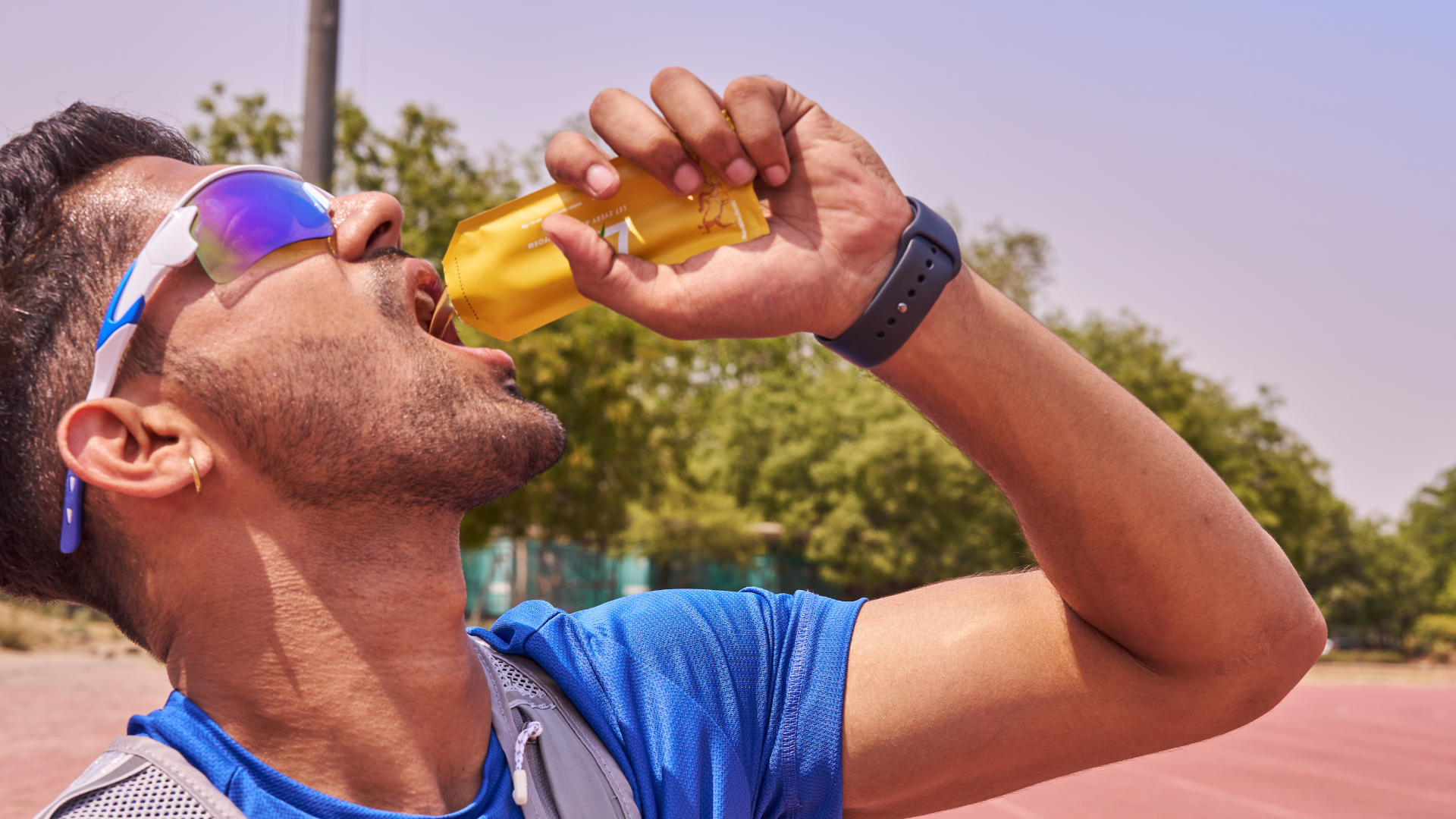Essential Marathon Gear: Choose Your Kit Early for Success

Claire Small
Chief Clinical Officer & Consultant Physiotherapist
- 24 October, 2024
- Running
- 6 min read
Essential Marathon Gear: Choose Your Kit Early for Success

When it comes to marathon training, the significance of selecting the right gear cannot be overstated. The apparel and equipment you choose play a pivotal role in your training journey and ultimate success on race day.
Your gear not only impacts your performance but also influences your comfort, endurance, and overall experience. Wearing the right kit can mean the difference between achieving a new personal best and struggling to finish the race due to pain caused by chafing or ill fitted gear.
Selecting the right gear early in your training program is crucial. This allows you sufficient time to get used to your clothing and equipment, ensuring that everything works well for you. The last thing you want is to encounter discomfort or distractions during your marathon. By choosing your kit early, you can train with it and make necessary adjustments, so you’re perfectly prepared when it counts the most.
Key Elements of a Marathon Training Kit
A well-rounded marathon training kit consists of several essential items. First and foremost, investing in a good pair of running shoes is paramount. Your shoes should provide the right amount of support, cushioning, and durability to withstand long distances.
If you have a shoe brand that you are comfortable with, stick with it. When you try on the shoes, stand in them and you should be able to fit one finger space beyond your big toe. You need this additional room to allow your foot to move properly when you run. Make sure it is comfortable as you put the shoe on. Comfort is the biggest indicator for shoe choice. For distance running some cushioning will go a long way in looking after your feet as you spend a few hours running.
It’s advisable to visit a specialist, such as a Podiatrist, for a gait analysis to determine which shoes best suit your running style.
In addition to shoes, appropriate clothing is crucial. Opt for moisture-wicking fabrics to keep you dry and comfortable. This includes running tops, shorts, or leggings tailored to your climate and personal preference. Don’t forget about high-quality socks, which can help prevent blisters and provide additional comfort. Also, for the warmer months, when running in hot weather, lighter coloured clothing will make a big difference.
Accessories such as a running watch can help you track your progress and performance. You don’t need an expensive one if you just want to know your current pace and heart rate. The more expensive watches are needed when you would like maps and more detailed feedback.
Hydration gear, like a water bottle or hydration pack, is essential, especially during long runs. If you decide to use these, train with them so that you can adjust and see if they fit well. Depending on your needs, you might also consider items like a hat or sunglasses for sun protection, and reflective gear if you’re running in low-light conditions.
How the Right Gear Enhances Performance
The right gear can significantly enhance your performance by providing support and efficiency during your runs. Proper footwear, for example, can improve your running gait, reduce the risk of injury, and increase your overall comfort. Shoes that match your specific foot type and running style help distribute pressure evenly, allowing you to maintain an optimal pace for longer periods.
Clothing designed for running can aid in regulating your body temperature, keeping you cool when it’s hot and warm when it’s cold. Technical fabrics wick sweat away from your skin, preventing chafing and irritation. This attention to detail can improve your focus and stamina, allowing you to concentrate on your pace and form. Plus, wearing some bright, fun colours can help brighten up those long training runs.
Furthermore, using the right accessories, such as a GPS watch, can provide real-time feedback on your performance. Monitoring your speed, distance, and heart rate helps you adjust your training plan and stay on track to achieve your marathon goals. These elements combined create a harmonious synergy that enhances your overall running experience.
The Role of Comfort in Long-Distance Running
Comfort is a critical factor in long-distance running. When you’re running for hours, even minor discomfort can escalate into significant problems. Blisters, chafing, and improper support can derail your training and make marathon day unbearable. These kinds of discomfort can also lead to developing injuries as they may make you change the way you run resulting in some muscles work harder than others, which could lead to early fatigue. Therefore, ensuring that your gear fits well and feels good is essential.
Comfortable gear allows you to focus on your run, rather than being distracted by irritation or pain. Clothing that moves with your body, shoes that provide adequate cushioning, and accessories that don’t impede your stride are all vital components. When every part of your kit works seamlessly together, you can push further and faster without hindrance.
Moreover, the psychological comfort of knowing that your gear won’t fail you can boost your confidence. A confident runner is more likely to achieve their personal best, as they can channel their energy into performance rather than worrying about potential gear issues. Comfort, both physical and mental, is indispensable in the quest for marathon success.
Adapting to Your Gear Before Race Day
To maximise your performance on race day, it’s crucial to adapt to your gear well in advance. This means incorporating your chosen kit into your training runs regularly, long before the marathon. This practice helps your body adjust to the feel and function of your gear, allowing you to identify any potential issues early on.
Breaking in your shoes, for instance, ensures they are comfortable and supportive throughout the marathon. Similarly, wearing your race-day clothing during long training runs tests their suitability for extended wear. By doing so, you can make any necessary changes, such as adjusting your choice of socks or swapping out an uncomfortable top.
Additionally, practicing with your hydration gear and accessories helps you develop a routine for using them effectively. Whether it’s reaching for a water bottle or checking your pace on a watch, familiarity breeds efficiency. This preparation eliminates surprises on race day, allowing you to focus entirely on achieving your marathon goals.
Common Mistakes in Choosing Marathon Gear
One common mistake runners make is selecting gear based solely on appearance or brand reputation, rather than functionality and personal fit. While stylish gear might be tempting, it’s essential to prioritise comfort and performance. What works for one runner may not work for another, so personal testing is critical.
Another frequent error is neglecting to break in new gear before race day. Wearing untested shoes or clothing can lead to unwanted surprises which you don’t need half way through training, or worse on race day itself. It’s important to integrate new gear gradually into your training regimen to ensure it performs well under marathon conditions.
Ignoring weather conditions is also a pitfall. Runners should choose gear that accommodates the climate they’ll be racing in, considering factors like temperature, humidity, and potential rain. Being unprepared for weather changes can negatively impact your race day experience and performance.
Expert Tips for Selecting the Right Kit
Our experts recommend starting with a professional gait analysis to find the right running shoes. This assessment can identify any specific requirements you might have, ensuring you choose footwear that optimises your stride. Pair your shoes with quality, moisture-wicking socks to prevent blisters and enhance comfort.
When selecting clothing, prioritise breathability and flexibility. Opt for fabrics engineered to handle sweat and temperature changes. Test different brands and styles during training to find what suits you best, and don’t forget about weather-specific gear, such as lightweight jackets or thermal layers.
Accessories should complement, not complicate, your running experience. Invest in a reliable running watch that matches your training needs and a hydration system that fits comfortably. Remember, less can be more; only carry what you truly need to avoid unnecessary weight and distractions.
Preparing Mentally and Physically with the Right Gear
The right gear does more than just support your physical performance; it also prepares you mentally. Knowing you’ve selected the best possible kit instils confidence, reducing pre-race anxiety and allowing you to focus on your strategy. This mental preparedness is as crucial as physical training in achieving a successful marathon.
Physically, your gear should enhance your natural abilities, not hinder them. Every piece of your kit should support your training objectives, from improving your running form to maintaining energy levels. By aligning your gear with your goals, you create a cohesive plan that maximises your potential on race day.
In conclusion, choosing the right marathon training kit early is a strategic decision that enhances both comfort and performance. By understanding the importance of each gear element, avoiding common mistakes, and integrating expert tips, you can set yourself up for success. Embrace the process, adapt to your gear, and prepare both mentally and physically to achieve your marathon goals.

Advice
Over the last 20+ years our experts have helped more than 100,000 patients, but we don’t stop there. We also like to share our knowledge and insight to help people lead healthier lives, and here you will find our extensive library of advice on a variety of topics to help you do the same.
OUR ADVICE HUBS See all Advice Hubs





